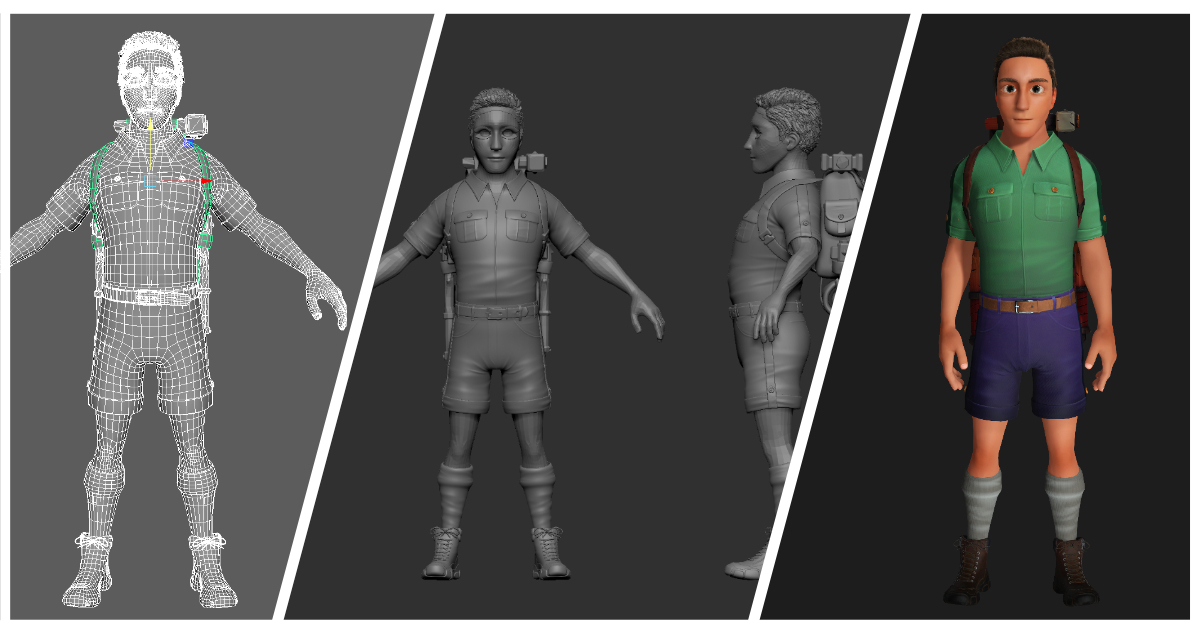Featured
The 3D Modeling Pipeline: An In-Depth Look at the Complete Process

The world of 3D modeling and animation is a fascinating realm where artists and technicians work together to create immersive and visually stunning experiences. From blockbuster movies to video games, 3D models play a pivotal role in bringing digital worlds to life. In this article, we will delve into the complete 3D modeling pipeline, exploring each stage of the process and highlighting essential keywords.
-
Concept Art
The journey begins with concept art, where artists visualize the ideas and designs that will be transformed into 3D models. This stage includes character design, environment design, and storyboard creation. Concept artists use digital tools like Photoshop and Sketchbook Pro to bring their ideas to life.
Keywords: concept art, character design, environment design, storyboard, Photoshop, Sketchbook Pro
-
Modeling
Once the concept art is approved, the modeling stage commences. This is when 3D artists create the geometry and structure of the objects and characters in the scene. They use software like Autodesk Maya, Blender, or 3ds Max to craft the models. This process involves sculpting, retopology, and UV mapping, which helps define how textures will be applied to the models.
Keywords: modeling, geometry, Autodesk Maya, Blender, 3ds Max, sculpting, retopology, UV mapping
-
Texturing
Texturing is the process of applying colors, patterns, and textures to 3D models, giving them a realistic appearance. Artists use programs like Substance Painter, Photoshop, or Mari to create texture maps, such as diffuse, specular, and normal maps, which are then applied to the models.
Keywords: texturing, Substance Painter, Photoshop, Mari, texture maps, diffuse, specular, normal maps
-
Rigging
Rigging refers to the process of creating a skeleton for a 3D model, allowing it to be animated. This involves creating joints, bones, and controls that enable the model to move and deform in a lifelike manner. Rigging is typically done using software like Autodesk Maya, Blender, or 3ds Max.
Keywords: rigging, skeleton, joints, bones, controls, Autodesk Maya, Blender, 3ds Max
-
Animation
During the animation stage, artists bring the 3D models to life by creating movement and expressions. This process involves keyframing, where artists set the position, rotation, and scale of the model at specific points in time, creating a sequence of frames that, when played back, show the desired motion.
Keywords: animation, keyframing, position, rotation, scale, sequence, frames
-
Lighting
Lighting plays a crucial role in setting the mood and atmosphere of a 3D scene. Artists use virtual light sources to simulate real-world lighting conditions, affecting the appearance of models, textures, and shadows. Software like Autodesk Maya, Blender, and 3ds Max offer powerful lighting tools for artists to work with.
Keywords: lighting, virtual light sources, shadows, Autodesk Maya, Blender, 3ds Max
-
Rendering
Rendering is the process of generating a final 2D image or sequence of images from the 3D scene. This stage involves calculating how light interacts with the models, textures, and environment, producing realistic reflections, refractions, and shadows. Rendering can be time-consuming and often requires powerful computer hardware or render farms.
Keywords: rendering, 2D image, light interactions, reflections, refractions, shadows, render farms
-
Compositing and Post-Production
The final stage in the 3D modeling pipeline is compositing and post-production. During this phase, artists enhance the rendered images or sequences by adding visual effects, adjusting color grading, and refining the overall appearance. Compositing software like Adobe After Effects, Nuke, or Fusion enables artists to layer and blend different elements, such as live-action footage, 3D renderings, and visual effects, creating a cohesive final product.
Keywords: compositing, post-production, visual effects, color grading, Adobe After Effects, Nuke, Fusion
In conclusion, the 3D modeling pipeline is a multi-stage process that requires a combination of artistic talent and technical expertise. Each stage, from concept art to post-production, plays a critical role in producing high-quality 3D models and animations. Understanding the various components of the pipeline is essential for aspiring 3D artists and professionals seeking to improve their skills and create stunning digital worlds.
